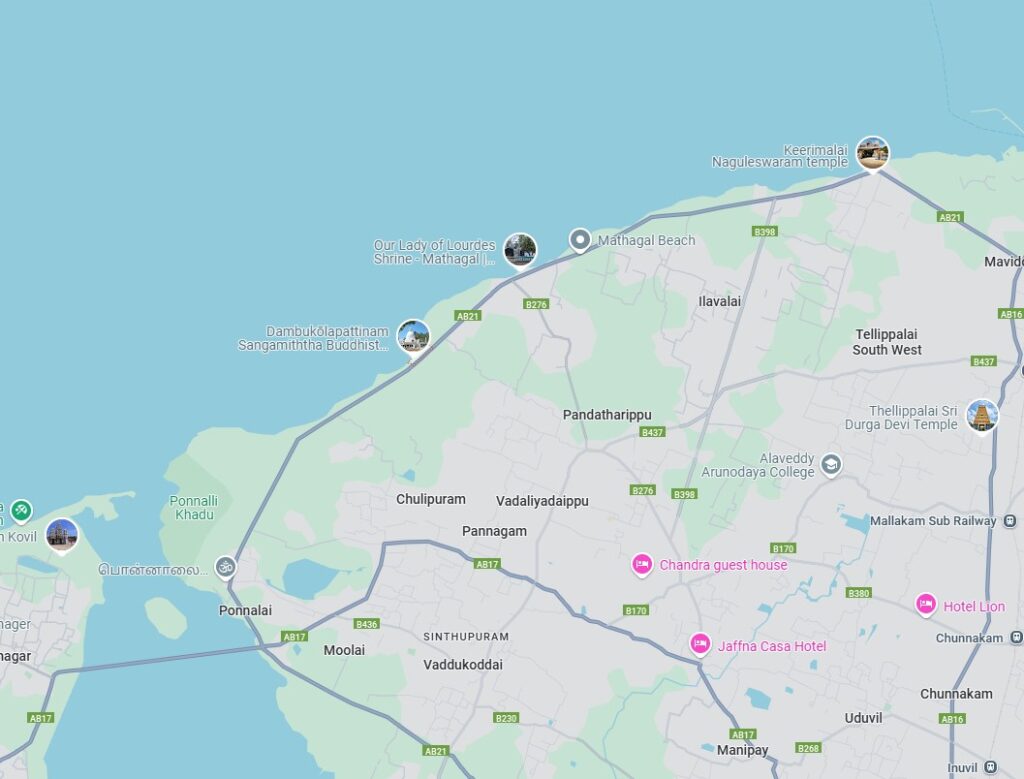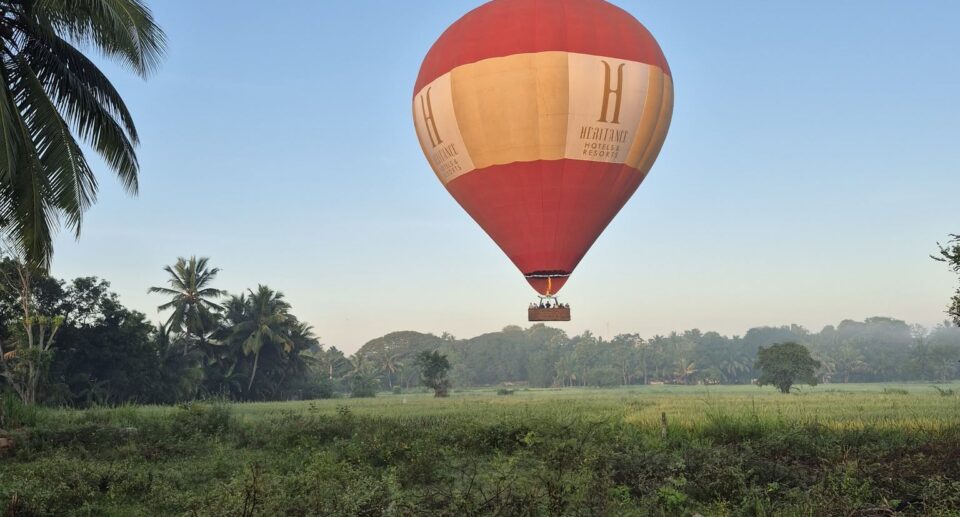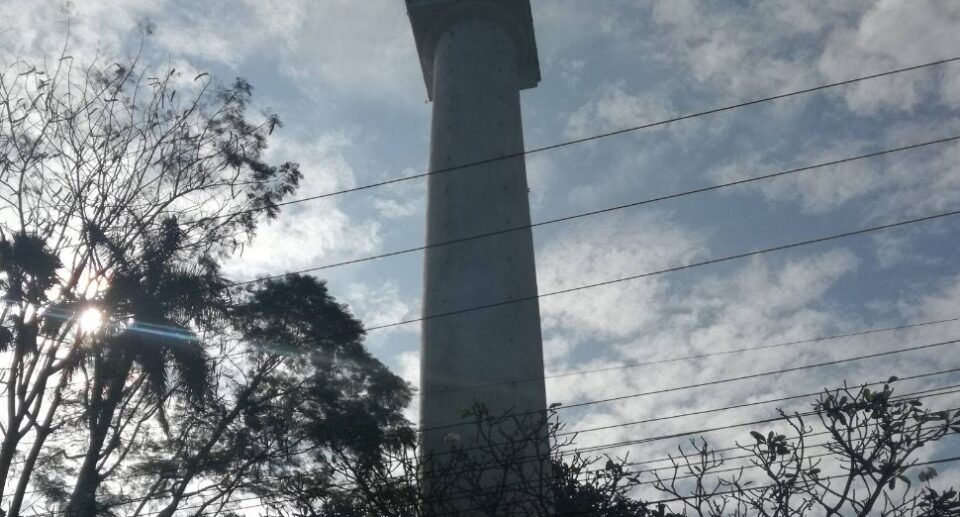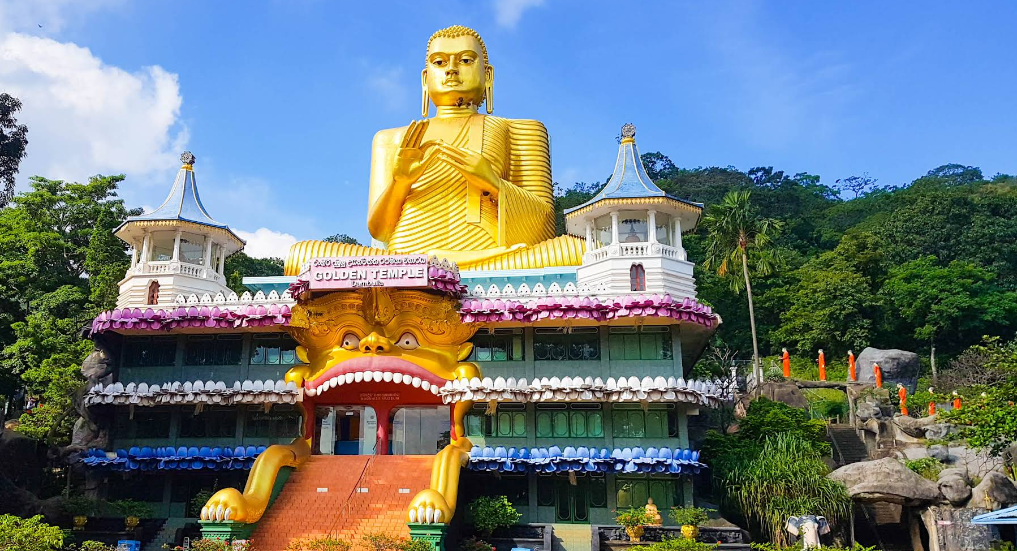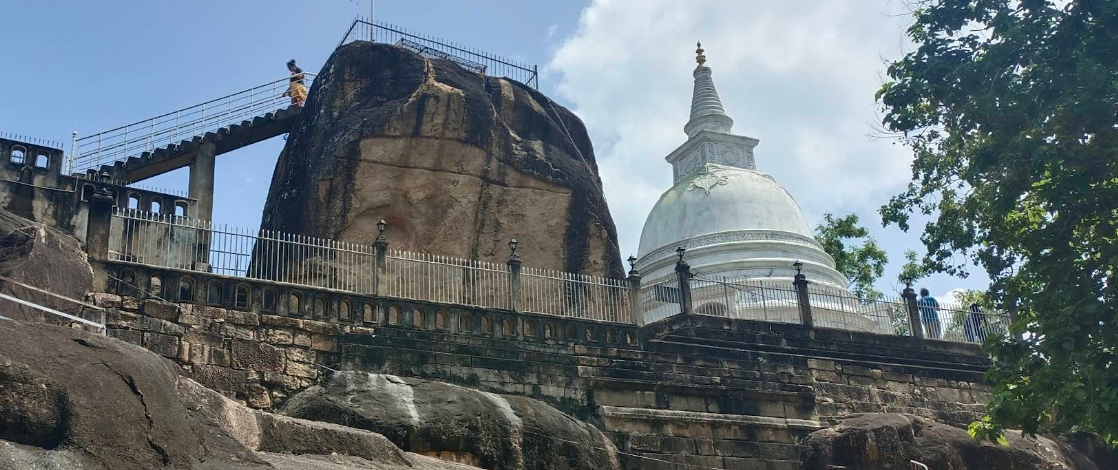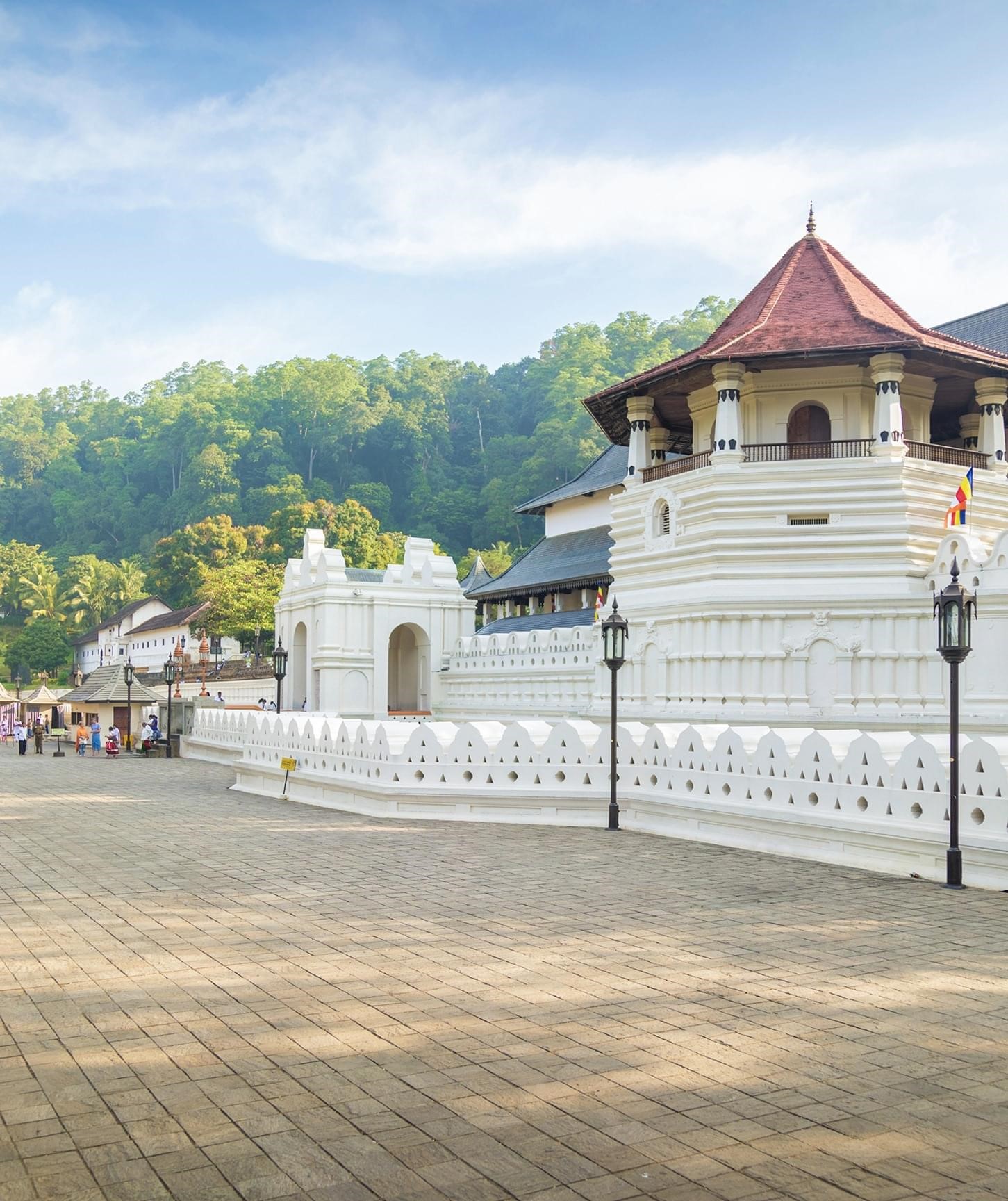Dabakolapatuna: A Jewel of Sri Lanka’s Ancient Buddhist Heritage
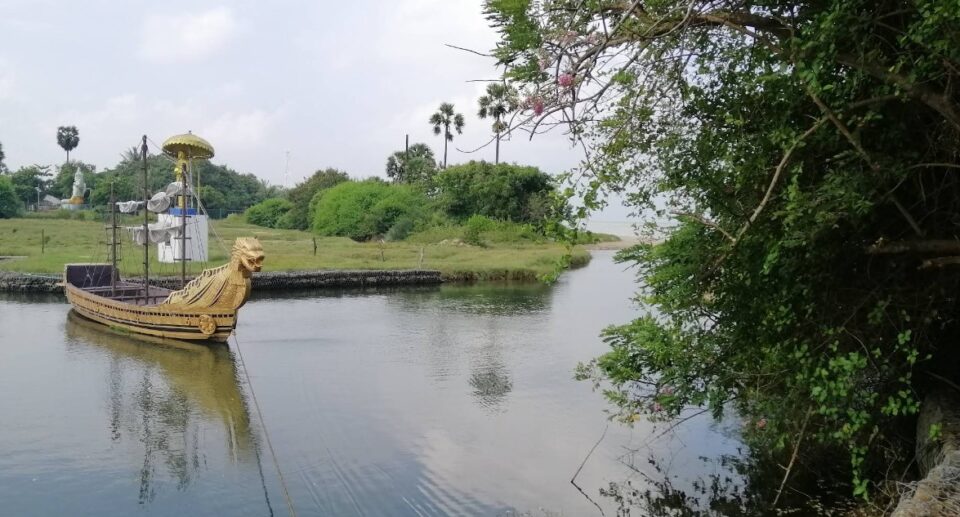
On the idyllic northeast coast of Sri Lanka’s Jaffna Peninsula lies Dambakolapatuna, a quiet village steeped in spirituality and history. Though deceptively modest in appearance, this coastal spot is reputed to be the ancient entry port where Theri Sangamitta, daughter of Indian Emperor Ashoka, arrived in Sri Lanka over two millennia ago. She took with her a sapling of the Bodhi tree of Bodh Gaya the tree under which the Buddha himself gained enlightenment planting the seeds of Buddhism that would have far-reaching impacts upon the island’s culture and identity.
Today, Dambakolapatuna Viharaya (or Sangamitta Temple) is not just a memorial to this ancient occurrence but also a symbol of Buddhist revival and reconciliation in the post-war northern Sri Lanka. A place of Buddhist pilgrimage, a symbol of spiritual harmony, and a rising spot for cultural tourism in Jaffna.
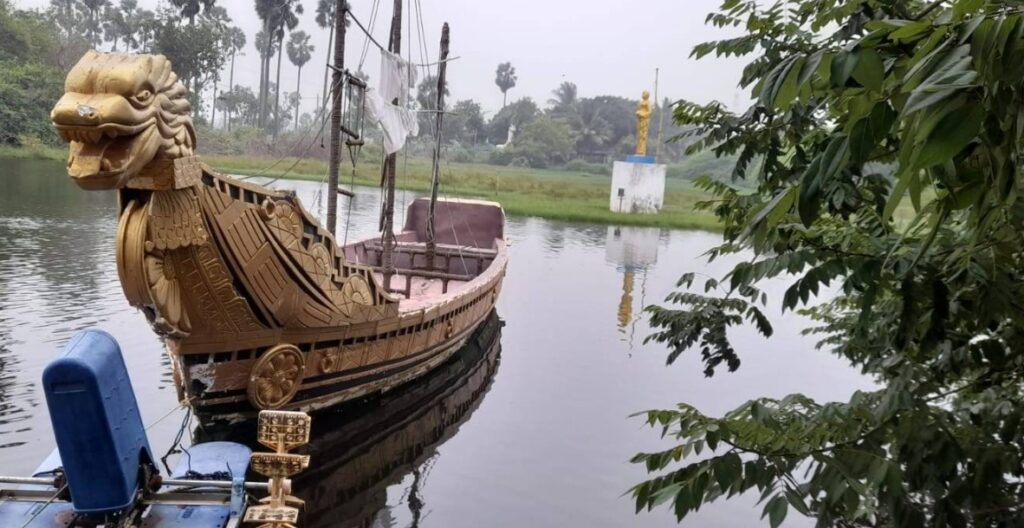
A Port of Sacred Arrival
Historically known as Dambakola Patuna, the port was one of the chief sea entry points to the ancient capital of Anuradhapura, which was far inland but connected by roads and waterways. It was here that Sangamitta Theri landed in the 3rd century BCE, during the reign of King Devanampiya Tissa, with the southern branch of the Sri Maha Bodhi tree, says Sri Lanka’s ancient chronicle, the Mahavamsa. It was a watershed in Sri Lanka’s religious history the beginning of a deeply rooted Buddhist tradition that would continue for over 2,000 years.
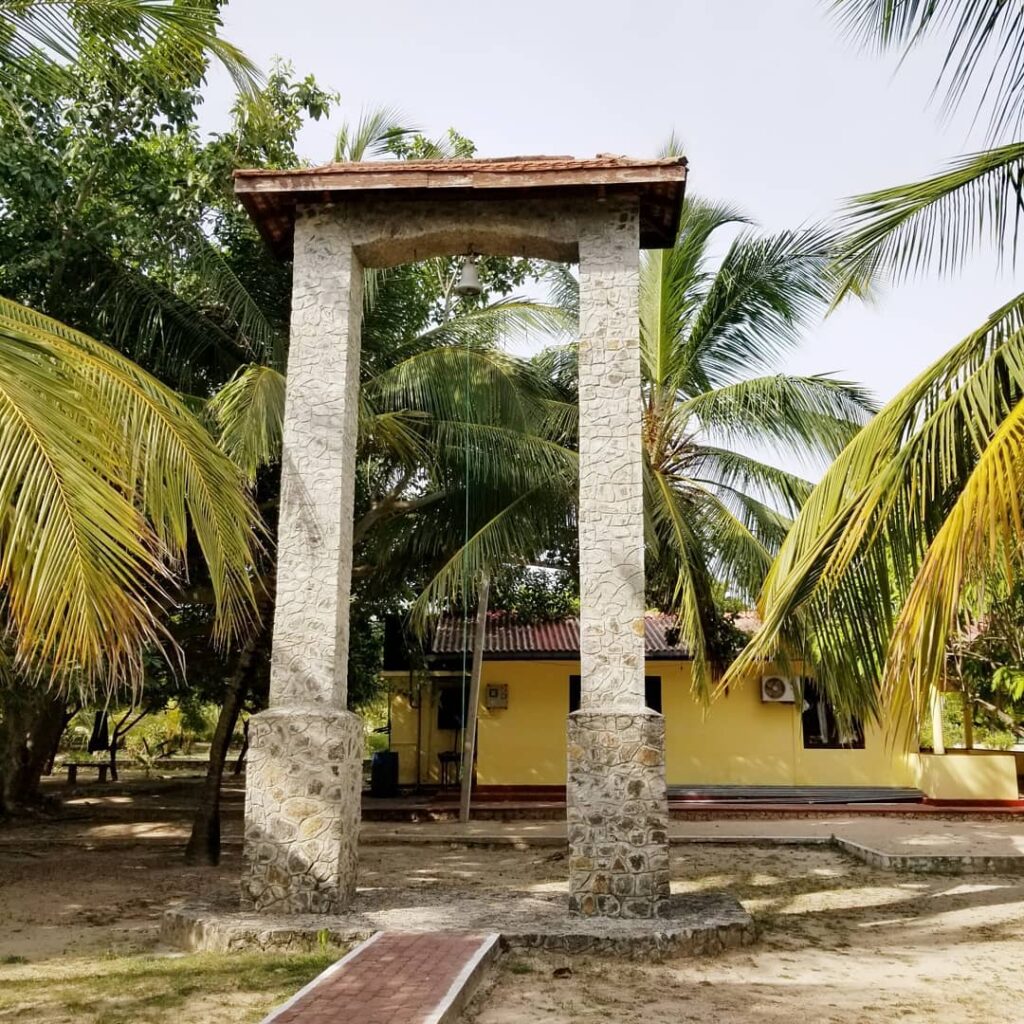
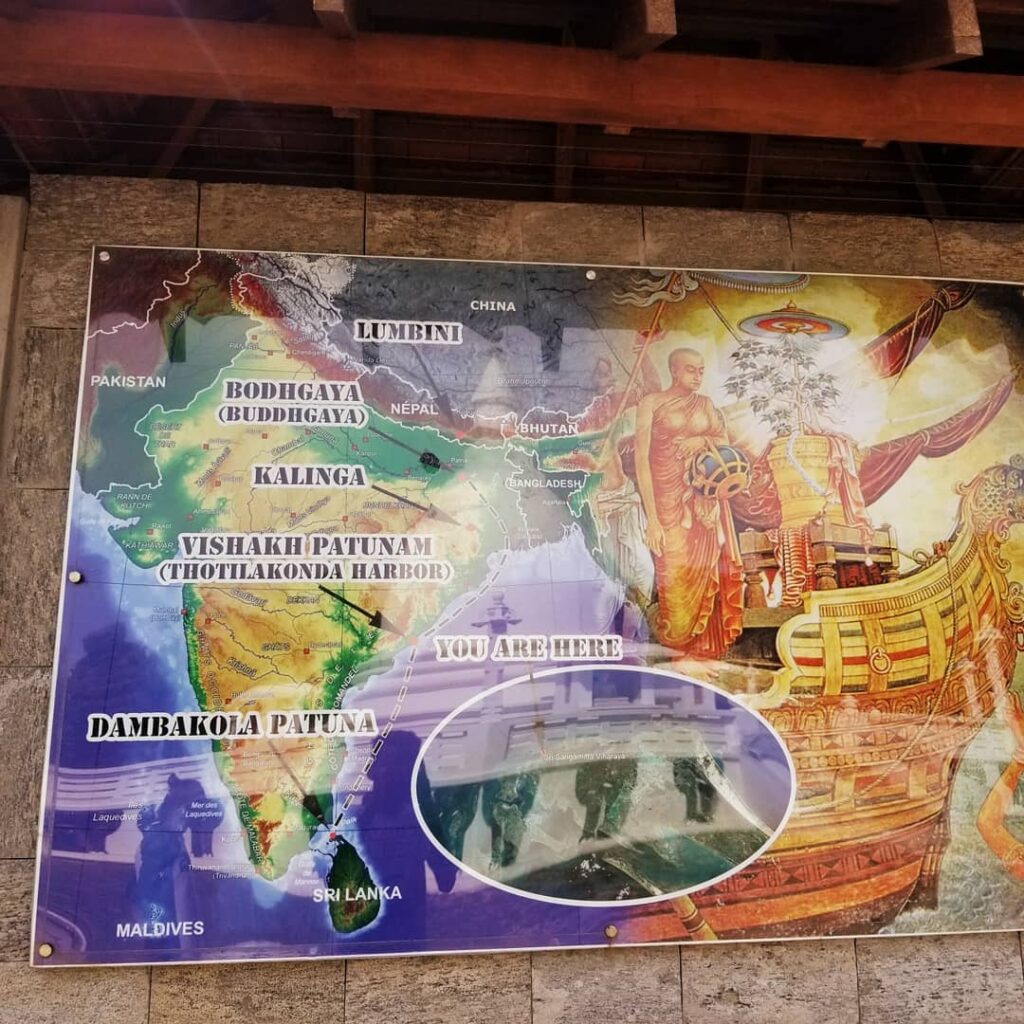
King Tissa is said to have personally received the Bodhi sapling at Dambakolapatuna and transported it to Anuradhapura, where it was ceremonially planted in the Mahamewna Gardens a tree that lives to this day and is the world’s oldest historically authenticated tree.
The Modern Revival of the Temple
Although the old port itself fell into disuse and was all but forgotten for centuries, the new Dambakolapatuna Temple was constructed in the early 2000s as part of a general campaign to identify and restore important Buddhist heritage sites, especially in the north, which had been inaccessible for decades because of the long civil war.
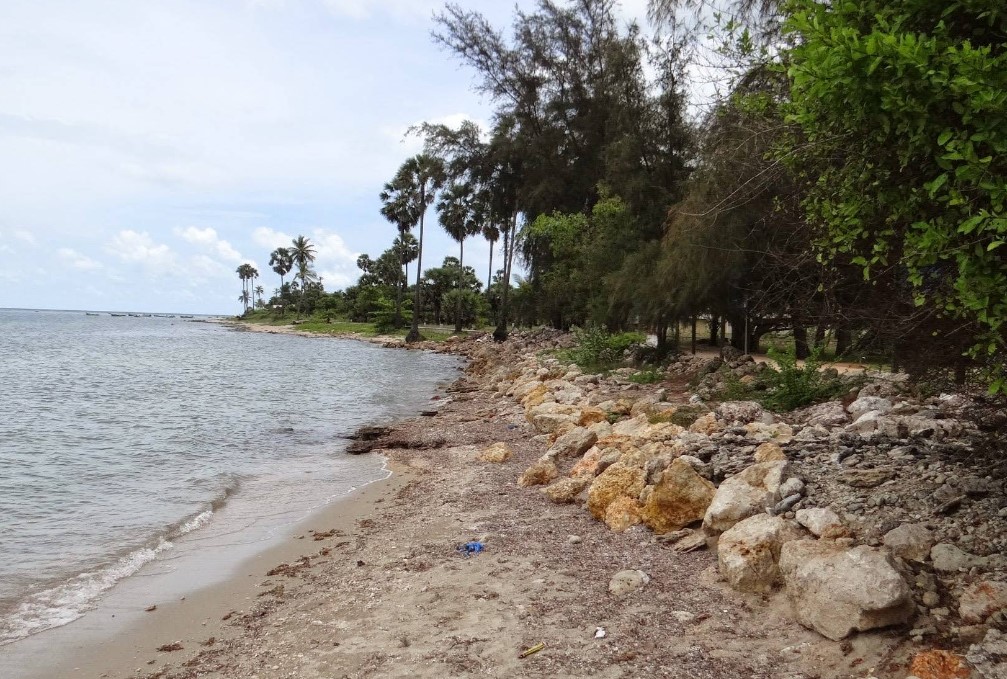
The Sri Lankan government and Navy helped to build the Dambakolapatuna Sangamitta Viharaya to reinstate the area’s spiritual importance. The temple’s golden stupa (dagoba) glistens in the sun, while a Bodhi tree planted from a sapling of the Anuradhapura sacred tree symbolically links the past and present. Nearby stands a statue of Sangamitta Theri facing the sea, a memorial to her legendary journey.
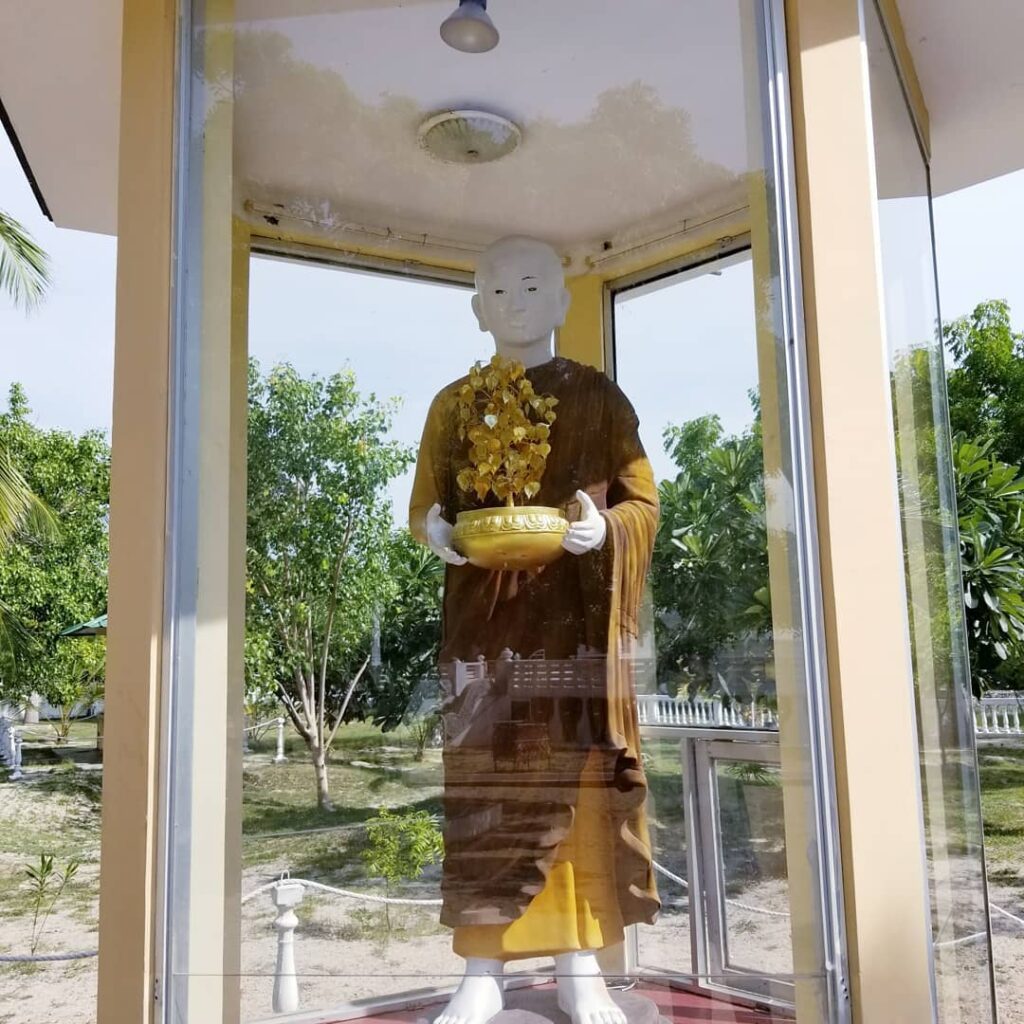
Architecture and Surroundings
The design of the temple is modest but deeply symbolic. It is made up of a tiny shrine room, a golden stupa, a Bodhi tree, and exquisitely maintained gardens that are part of the serene ambiance. The white statue of Sangamitta carrying a Bodhi sapling is the emotional centerpiece of the property.
Fronting the open ocean, the temple complex is pervaded with an atmosphere of still reverence. Unlike some of the larger pilgrimage centers such as Anuradhapura or Kandy, Dambakolapatuna is serene and not crowded, and one can easily sit in contemplation of its spiritual and historical importance.
The immediate surroundings are a blend of natural scenic beauty and rural charm. Fishing boats sail the nearby waters, and the Tamil and Sinhala locals coexist a day-to-day expression of post-war coexistence.
Cultural and Religious Significance
Dambakolapatuna is not merely an historical site but also a powerful marker of Buddhist identity, especially for pilgrims from the south. It is a tangible connection to the bringing of Buddhism to Sri Lanka and to the close relationship that existed between ancient India and the island.
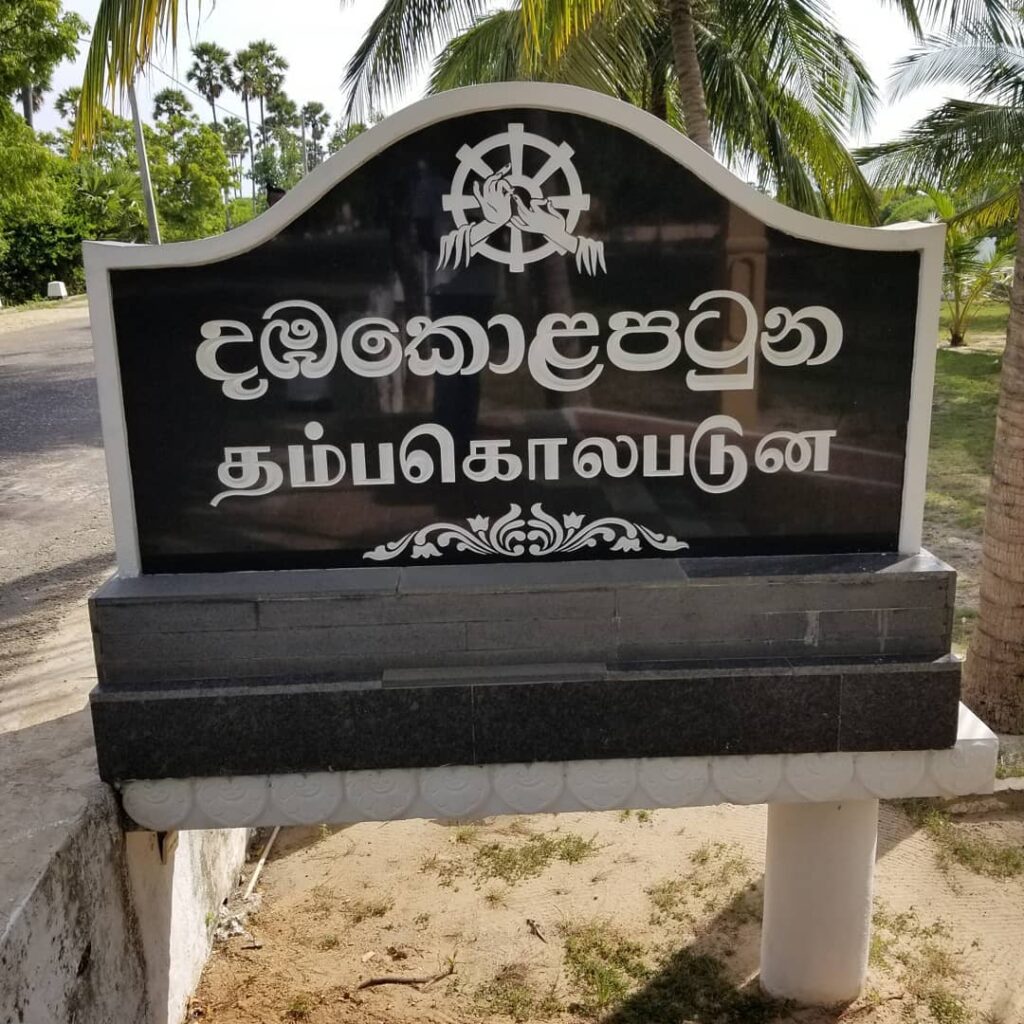
Pilgrims typically visit as part of a northern Buddhist circuit, which consists of: Nagadeepa Purana Viharaya, another ancient temple on the nearby island of Nainativu Kadurugoda Viharaya, an archaeological site with dozens of small stupas in Chunnakam, Jaffna And occasional trips to Anuradhapura, creating a spiritual bridge from the north coast to the sacred capital inland.
Visiting Dambakolapatuna helps bridge regional and cultural gaps, and brings about reconciliation as well as national unity in a country still healing after decades of civil war.
How to Get There
Dambakolapatuna is situated in the Jaffna District, about 30 km northeast of Jaffna town, near the coastal village of Mathagal.
Traveling options: From Jaffna town: About 1 to 1.5 hours by car or tuk-tuk
From Colombo: About 8–10 hours by road, or 1 hour by air (to Jaffna’s Palaly Airport) + surface travel
Public buses also run to the nearby villages, but private transport is more convenient due to the remote location.
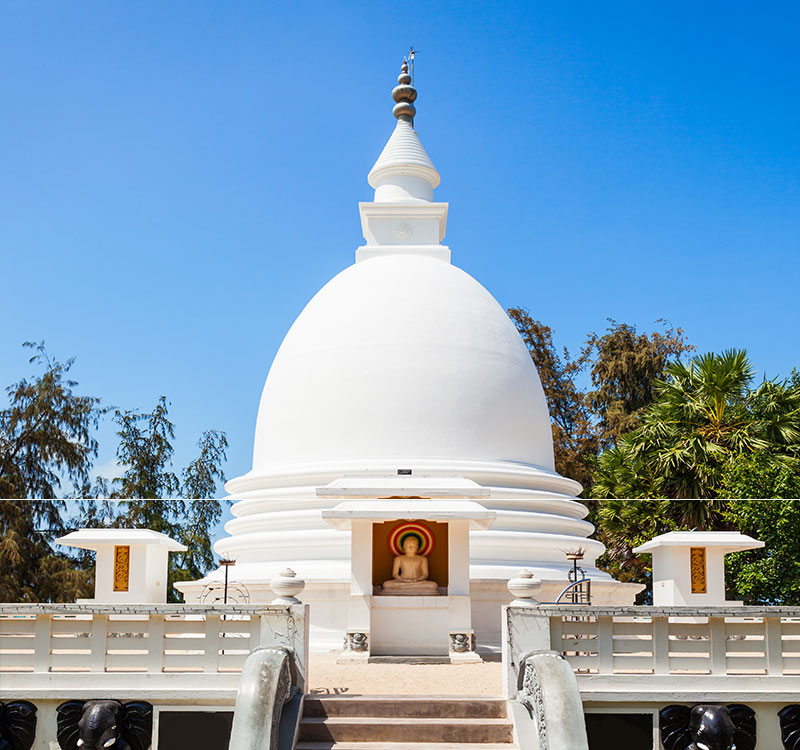
Best Time to Visit
The temple can be visited at any time of the year, but the dry season (February to September) is ideal for travel in the north.
Early morning or late afternoon visits are ideal, avoiding the hot midday sun. Special religious ceremonies are held during Vesak and Sangamitta Day (usually in December), which see more pilgrims visit the site.
What to Expect During a Visit
A quiet, respectful atmosphere, Free entry, though donations are welcome, Clean toilets and basic facilities, not commercialized , Dress modestly: knees and shoulders covered, shoes removed when visiting shrines. Historical background given by local guides or monks if requested
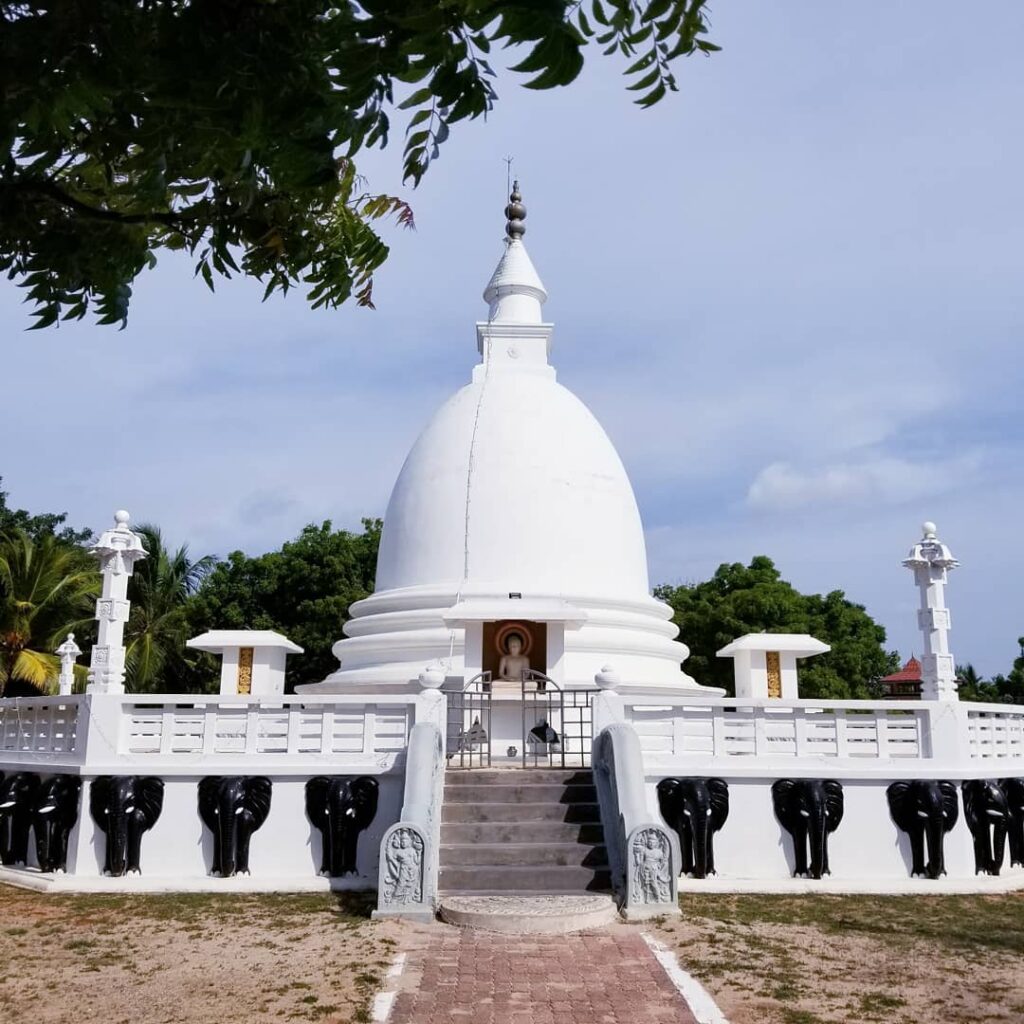
Combine your visit with a trip to Nagadeepa Island, a short drive and boat ride away, to further explore the area’s Buddhist history.
Local Community and Integration
One of the most striking aspects of a visit to Dambakolapatuna today is witnessing the coexistence of Tamil and Sinhala individuals in the area. Since the civil war ended in 2009, efforts have been directed towards ensuring that religious tourism does not create a divide among people but instead fosters understanding and shared heritage.
Nearby villages normally greet visitors with hospitality, and refreshments can be obtained at small shops and food stalls. There is also more involvement of Tamil Buddhist monks and multi-lingual signage, suggesting a more inclusive approach to heritage management.
A Sacred Shoreline Reclaimed
Dambakolapatuna may not be in every tourist guidebook, but for the visitor who seeks an experience that transcends geography and enters the realm of history, spirituality, and reconciliation, it is a place of profound importance. Standing by the waves that carried Sangamitta and the Bodhi sapling to these shores so many centuries ago, you are reminded not only of the birth of a religion but also of the birth of peace and harmony in diversity.
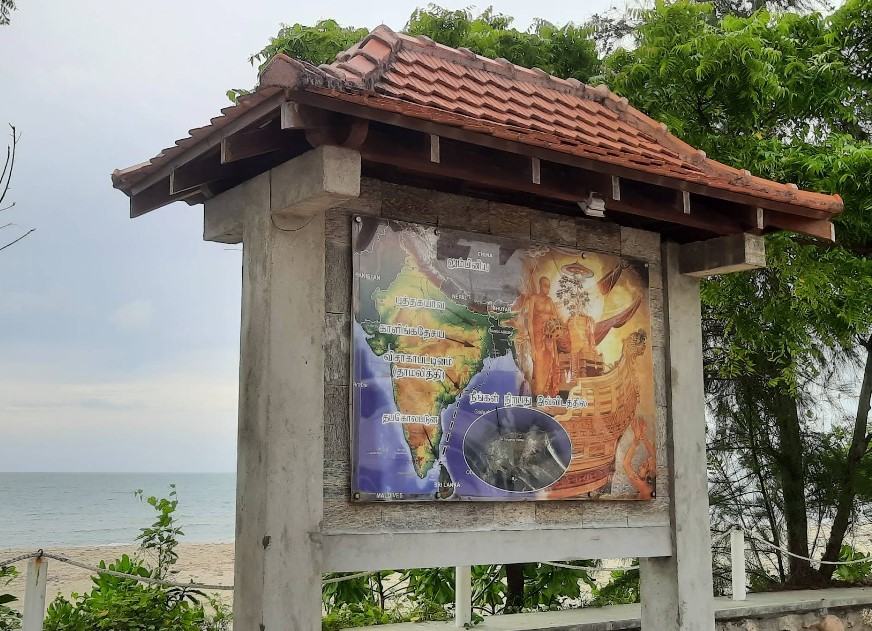
On an island replete with ancient myth and sacred landscape, Dambakolapatuna is the place where a nation’s spiritual tradition first touched shore a pilgrimage not just to a location, but to the heart of Sri Lanka’s Buddhist soul.
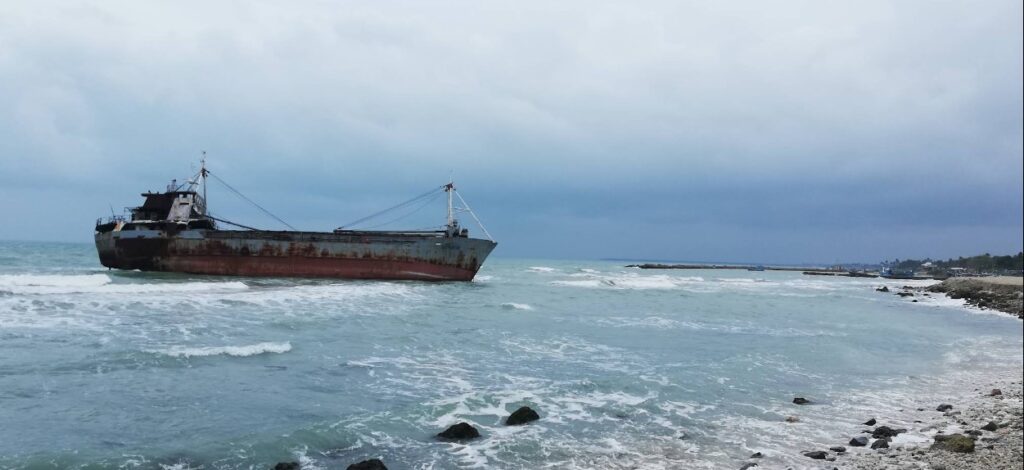
How to Reach Dambakolapatuna
From Colombo:
- By Road: The journey from Colombo to Dambakolapatuna spans approximately 400 km and takes about 7 to 8 hours by car. You can drive via the A9 highway, passing through towns like Anuradhapura and Vavuniya, before reaching Jaffna. From Jaffna, continue north towards Kankesanthurai, then follow signs to Dambakolapatuna.
From Jaffna:
- By Car: Dambakolapatuna is approximately 21 km from Jaffna town, a drive of about 40 minutes. You can take the Jaffna-Manipay-Karainagar Road, passing through Sandilippai and Senthankulam, and then follow the Jaffna-Ponnalai-Point Pedro Road to reach Dambakolapatuna.
- By Public Transport: Buses from Jaffna to Kankesanthurai pass through Dambakolapatuna. Inform the conductor of your destination, and the fare is typically around LKR 50–100. Once you arrive, the temple is a short walk from the bus stop .
Map of Dabakolapatuna
